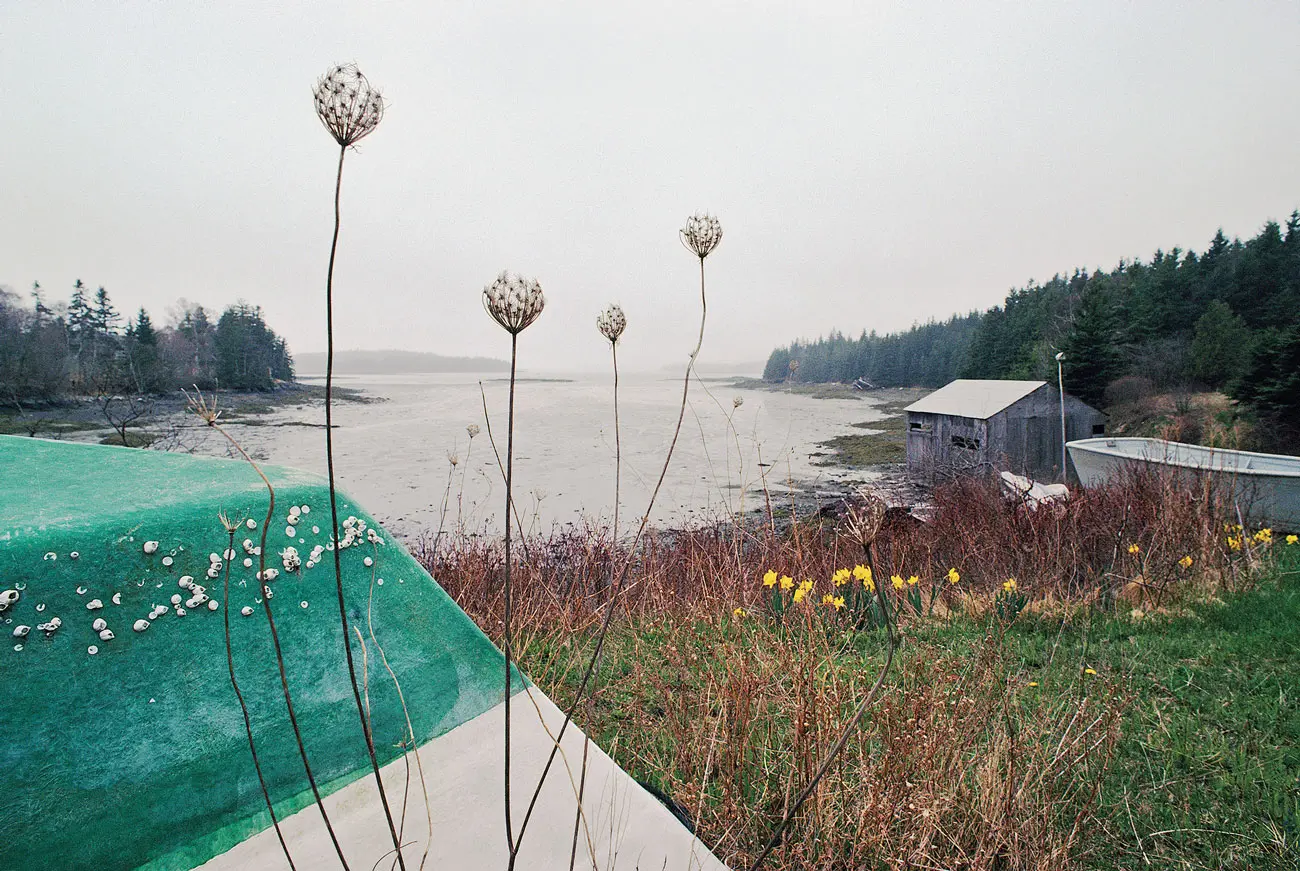By Philip Conkling
Photo by Peter Ralston
From our March 2022 issue
Twenty-five years ago, Vinalhaven summer resident Peter Richards, who’s one of this country’s gifted teachers, had an idea of how to convey math and science concepts to his fourth and fifth graders at an Atlanta elementary school. In addition to teaching them multiplication tables and long division, Richards asked his class to write postcards to a list of contacts living between Key West, Florida, and Fort Kent, Maine.
During the bleak months of winter, correspondents would get a neat, handwritten, stamped postcard that read, “We saw the first blooming daffodil on ________.” As the completed postcards trickled back into class, the students stuck pushpins into a map on the classroom wall, charting the rate at which spring unfurls along the Eastern Seaboard.
To be methodologically rigorous, the young math and science students recruited participants within 10 miles of Route 1, minimizing the flukiness of the data. The survey grew to include respondents in more than 80 cities and small towns. The respondents were friends and acquaintances of Richards with no particular meteorological expertise. Who doesn’t recognize a daffodil, when they see one blooming, as a harbinger of spring?
We used to hang our postcard on the refrigerator, a reminder all winter that spring might actually appear one day at the tip of the peninsula where we lived, a half mile from Route 1. Usually, we recorded our first daffodil during the end of March or first week of April. Sometimes, after a 28-degree night, it was a bit stiff and bent, like we were. We would note the date, mail the postcard to Atlanta, and look forward to the year’s results.
Before the end of the school year, we’d get a neatly handwritten report from Richards’s students. It showed the students’ careful measurement of the distance between the two most distant postcard-reporting stations, generally some 1,800 miles apart. Dividing that number of miles by the number of days, they arrived at the approximate speed of spring. I looked up one report from a decade ago that revealed spring had traveled 32.4 miles per day, or about 1.33 miles per hour. Wow, I thought, spring’s pace is faster than I could have walked — even biked! — the same distance.
Richards’s daffodil project stands in stark contrast to the “teach to the test” approach that’s standard in too many school districts. But it’s more than just a novel way to engage students in the natural world — it’s also significant for the rest of us. During the project’s last five years, before Richards retired from three decades of against-the-grain teaching, his students calculated that spring had sprung at rates of 12,16, 20, 23.4, and then 23.5 miles per day. What explains this hastening? Are daffodils changing their habits? Or is something else happening to the world these students are inheriting? That’s the $64,000 question — or is it a $64 trillion question? — that they are going to have to answer during their lifetimes.
In the meantime, we can reflect on what a devoted, creative teacher can bring to our lives. I pulled a few comments about Peter Richards off of a “rate your teacher” website: “Best teacher ever. I actually learned something in math,” one student wrote. “I learned SO MUCH in his class. Important things that resurfaced in school all the time,” said another. My favorite description of Richards was this: “He’s defiantly a legacy.”
I agree: a legacy, defiantly.




